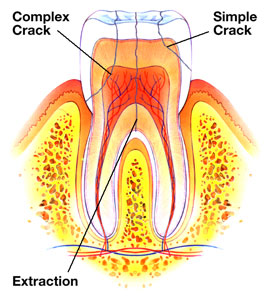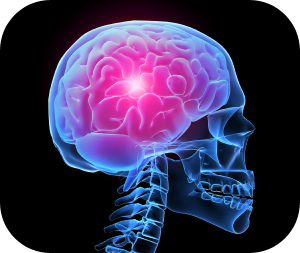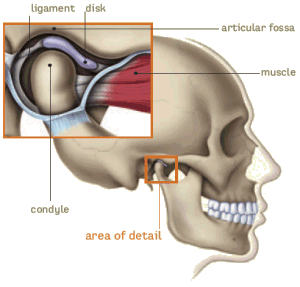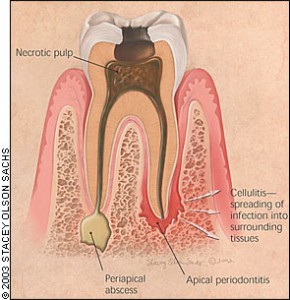Cracked, dry or sore lips are both unsightly and painful. They can be caused by a variety of conditions and can also be symptoms of more serious illnesses. If you suffer from dry or cracked lips, read on to learn how to understand and treat the problem. Continue reading
Category Archives: Oral Care
A Cracked Tooth
Sometimes you feel a sharp tooth pain upon biting and it causes you much annoyance and agony. There are many reasons for pain on biting and a cracked tooth is one of them. Continue reading
Pain in the Face and Mouth Part 4
Continued from Part 3
Chronic post-traumatic headache
Most persons who have had head injuries have local pain or tenderness at the site of impact for a few hours or even for a few days, after which many become symptom-free. However up to one half of all persons who injure their heads sufficiently to warrant hospitalization develop chronic post-traumatic headaches. Continue reading
Pain in the Face and Mouth Part 3
Continued from Part 2
Temporomandibuar joint
Pain from the temporomandibular joint may result from dysfunction, trauma, acute or chronic inflammation, or primary or secondary cancerous tumors. Examination may reveal the masticatory (chewing) muscles tender to palpation or occasionally the joint swollen and warm to touch or tender to palpation via the external auditory meatus. Pain from the temporomandibular joint: Continue reading
Dentinogenesis
Odontoblasts
Dentin-forming cells, odontoblasts, which originate from the ectomesenchyme, form a single layer of cells between the dentin and pulp. The cell body is located on the pulpal wall of dentin and the cellular process extends into the dentinal tubule within the mineralized dentin. The cell bodies are from 3 to 5 m wide and 20 to 40 m long depending on the age of the tooth. The odontoblastic process fills the lumen of the dentin tubule and it is composed of a main trunk, with a diameter of 0.5 to 1 m, and lateral branches. Contrary to the cell body, cell organelles (Golgi apparatus, rough endoblastic reticulum or mitochondria) usually do not appear in the odontoblastic process; however, microtubules, filaments and coated vesicles are present. Odontoblasts are connected to each other with interodontoblastic collagen, the so-called von Korff fibers. Frequent bundles of collagen fibrils enter the odontoblast layer from predentin and are present between odontoblast cell bodies. Ultimately they pass through the odontoblast layer into pulp. Histologically, secretory odontoblasts are columnar in shape. A large number of cytoplasmic organelles are identifiable in young odontoblasts, whereas, aged odontoblasts lose their columnar shape and contain a small number of Golgi apparatus and a small-sized rough endoblasmic reticulum. Continue reading
Leukemia and oral health
What is leukemia?
Leukemia is a malignant cancer of the blood in which one’s bone marrow produces white blood cells in excess in association with gene mutations.
Causes of leukemia
Genetic predisposition (family history, people with Down syndrome have higher tendency to get leukemia)
Artificial ionizing radiation
Chemicals (eg benzene and other petrochemicals)
Viruses, e.g. HIV (Human Immunodeficiency virus or HTLV-1 (human T-lymphotropic virus) Continue reading
Pain in the Face and Mouth Part 2
Continued from Part 1
Acute periapical periodontitis
Pain associated with acute perapical periodontitis:
-
Is spontaneous in onset
-
Is moderate to severe in intensity
-
Persists for long periods of time (hours)
-
Is worsen by biting on tooth and in more advanced cases, even by closing the mouth and bringing the affected tooth gently into contact with the opposing teeth. In these cases, the tooth feels ‘high’ (extruded) and is sensitive to touch Continue reading
Pain in the Face and Mouth Part 1
Everyone has experienced pain at least once in their lifetime. Pain is an unpleasant sensory and emotional experience associated with actual or potential damage or described in terms of such damage. Pain is not only a sensory experience, its relation with tissue damage may not be constant and it is often associated with affective and cognitive responses. Continue reading
Amelogenesis
Amelogenesis is the
- Amelogenesis is formation of enamel on tooth  and
- occurs during the crown stage of tooth development
- Amelogenesis occurs after dentinogenesis,
Reciprocal induction.
- Since dentin must be present for enamel to be formed,
- laying down of dentine induces ameloblasts to secrecte enamel
- this is termed reciprocal induction.
Amelogenesis occurs in 3 stages.
- The first stage is known as the Pre-secretary phase,
- the second stage is known as the secretary phase and
- third stage is called the  maturation stage. Continue reading
Types of toothbrushing methods
MANIPULATING THE BRUSH
To cleanse the occlusal surfaces of teeth, the tips of the bristles should be worked into the pits and fissures with enough vibration to loosen and dislodge all debris. Continue reading





